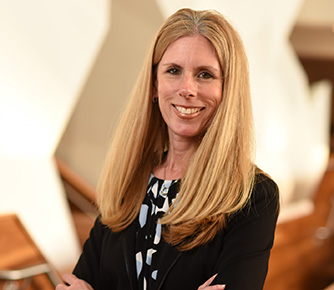The annual conference for the National Foster Parent Association took place recently in California. There, many foster parents, clinicians, and advocates — including several leaders from UnitedHealthcare — shared stories about foster kids and the best ways to serve them.
In that spirit, I want to share a story about Tyler*.
Tyler was born with neonatal abstinence syndrome (NAS), which can cause low birth weight, stomach issues and trouble sleeping. He spent two months in the NICU recovering before leaving the hospital with a foster caregiver. But Tyler was still feeling the effects of NAS, which severely impacted his ability to sleep. After eight days trying to help Tyler get comfortable and continue recovering, his caregiver reached out to us. Tyler was inconsolable. He needed more help. And his caregiver needed help too.
Every child has the right to a safe and supportive home. This is especially true for foster children like Tyler. They have complex needs, and they deserve a health care system that is responsive to these needs. That’s why UnitedHealthcare and Optum are dedicated to an approach that puts the needs of the foster child at the center.
It’s not an easy task; trauma is a tragic, but real, part of these children’s lives. All foster children need trauma-informed care. But this doesn’t mean that these children are “broken.” They’re actually far from it, and just need support to help them overcome the negative things they have experienced. They need partners working together to help connect the dots in their care: preventive health, complex conditions, behavioral health and ultimately, the transition out of the foster care system and into adulthood. Having our teams acknowledge and respond to these needs with empathy and compassion is critical to the success of these children.
Tyler’s story is a wonderful example of UnitedHealthcare’s approach in action. His care manager gathered a team including: a private duty nursing (PDN) coordinator, his pediatrician, a community development worker, and the caregiver. Working together, they were able to get PDN services in place to care for Tyler at night – which was critical for the single, working caregiver. The overnight staff began working on a consistent sleep schedule for Tyler, which allowed him to remain with that caregiver until he could get a more permanent placement with a family.
Most importantly, the PDN services transferred with Tyler, which made this transition to his new foster home as minimally disruptive as possible. However, sleep was still difficult. The UnitedHealthcare nurse found a clinic to conduct a sleep study and update his plan for a sleep schedule.
This coordinated care has allowed Tyler to thrive.
Our foster care teams in 13 states have accomplished a lot together. But we are not done. Our commitment is to transform the way the foster care system works — with equal measures of evidence-based approaches and compassion. It’s an ambitious goal that we will continue to focus on through support of the kids, the parents and foster parents, and our state partners – to ensure everyone thrives.
Read more from Heather Cianfrocco
*Tyler is not his real name; his name was changed to respect his privacy.
